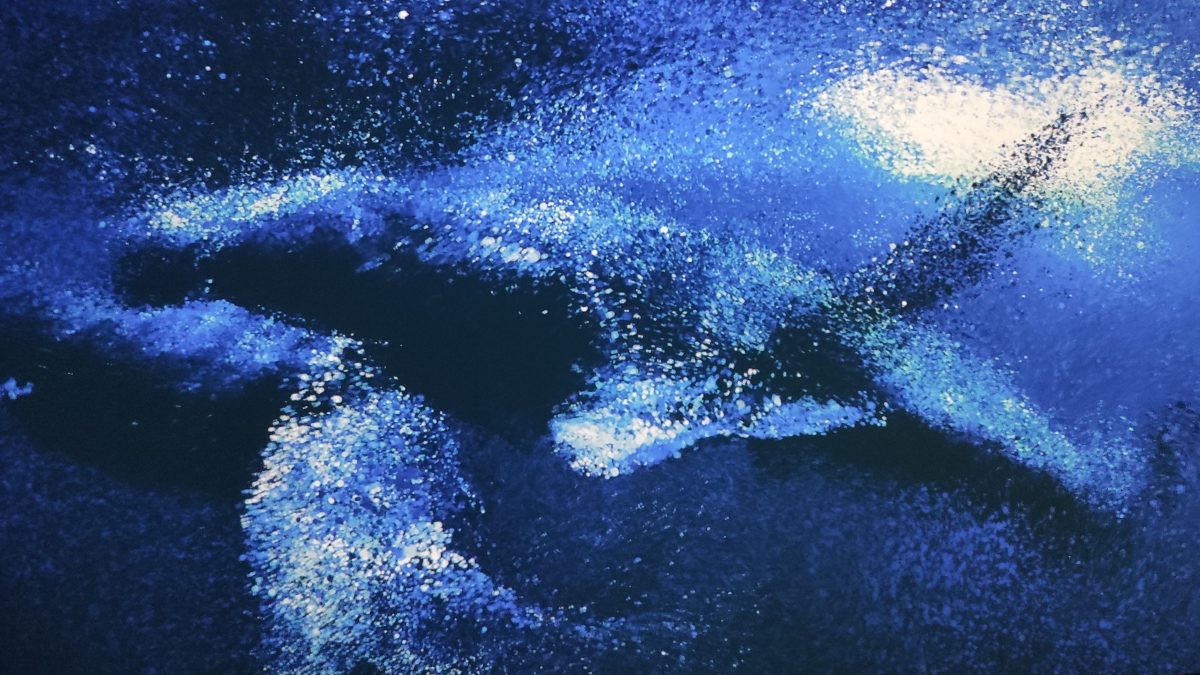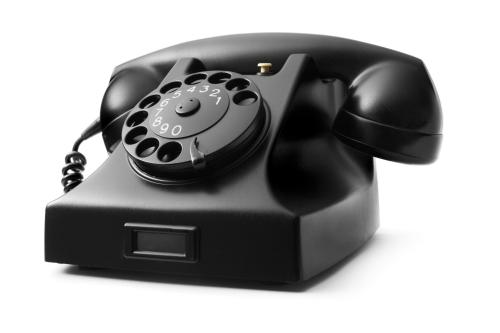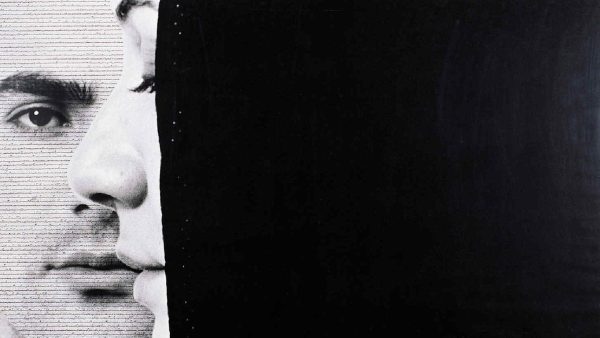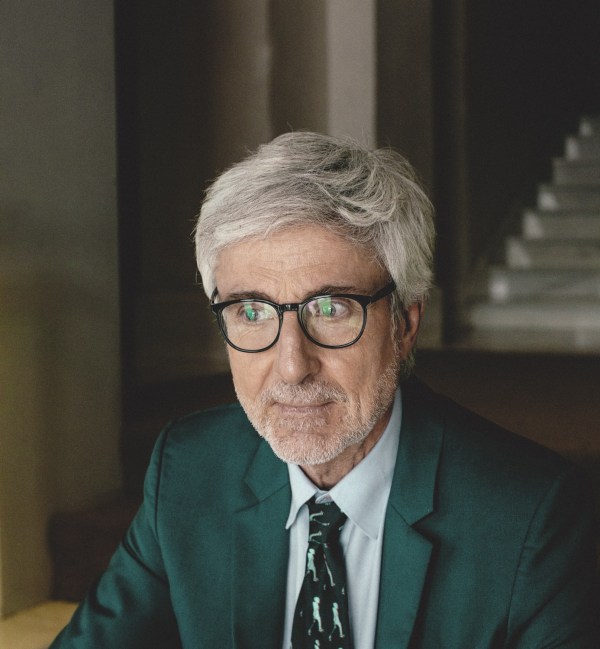The Ocean: outstanding works
The exhibition offers an immersive experience of the importance of acoustic information for the creatures that inhabit the ocean.
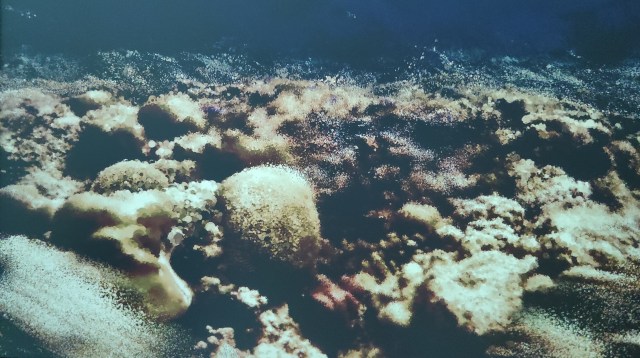
We highlight the video installation Seeing Echoes in the Mind of the Whale. A piece made up of twelve screens, which transports us to the extraordinary sensory world of cetaceans and offers us the possibility of observing how whales navigate, communicate and experience their world beyond what human beings can perceive through their own senses.
The work presents the journey of a dolphin, a whale and a sperm whale. Each being breathes on the surface of the ocean and dives to the depths below. The perspective of this ocean depth changes with each breath and allows the visitor to appreciate the world through the senses of these creatures.
This installation has been created by the collective Marshmallow Laser Feast (MLF), with sounds that come from the recordings of the Laboratory of Bioacoustic Applications of the Polytechnic University of Catalonia. It has been necessary to combine scientific knowledge, underwater recordings, images generated by artificial intelligence and a lot of effort to achieve this result. Likewise, it has benefited from the collaboration of Tom Mustill, a British biologist, filmmaker and writer. This piece is a co-production with the Museu del Disseny in Barcelona.
We don’t want to forget Temple of Plankton, another work created by Marshmallow Laser Feast. It is an installation made up of two hundred pieces of blown glass, made by a craftsman who recreates the tiny components of plankton and its movement in the ocean, which represents the largest migration in the world.
These works are accompanied by more scientific and technological elements. Among them, the tools used by the laboratory to capture and analyse the sounds it collects in the ocean, together with real recordings. It is important to remember that it was as a result of eavesdropping for military purposes during the Cold War that the voices of cetaceans were identified and the great evolution that has been perceived since then.
The authors
Let’s get to know a little more about the people who have made this exhibition possible. 1.
José Luis de Vicente (Curator of the project)
Spanish writer, thinker and curator. Director of the Museu del Disseny in Barcelona. Pioneer in exploring the intersection between art, science and technology. He has worked on the creation of projects that combine multiple disciplines: technology, social innovation, art, design, and that seek to reflect on the future.
His role as founder and artistic director of Sónar+D is particularly noteworthy. This is the culture and art programme of the Sónar Festival in Barcelona. He is also co-founder and artistic co-director of MODEL, the Barcelona architecture festival, and of Tentacular, the Critical Technologies and Digital Adventures festival at Matadero (Madrid).
Marshmallow Laser Feast (art collective)
Experimental artists based in London. Programmers, poets, chemists, they collaborate with specialists from multiple disciplines with whom they explore new forms of culture and question how we relate to the world around us. They trust in the power of stories to stimulate the senses and change perceptions. Their objective is to create spaces to exhibit, explore and expand the relationship with the living world.
His work has been exhibited internationally. London, New York, Melbourne, … are some of the locations. It is also part of important exhibitions in prestigious institutions.
Michel André (Scientist)
Professor and director of the Laboratory of Bioacoustic Applications at the Polytechnic University of Catalonia. Michel André is a Senior Engineer in Biotechnology from the Institut National des Sciences Appliquées, INSA; he has a degree in Biochemistry and Animal Physiology from the Université Paul Sabatier in Toulouse and a PhD in Biology from the University of Las Palmas de Gran Canaria. Founder and president of The Sense of Silence Foundation and International Ambassador of the Mamiraua Institute (Amazonas, Brazil).
His research work focuses on the development of acoustic technologies, which allow, among other things, the study and control of noise pollution on marine organisms and habitats.
Together, they have made it possible for art and science to be elements for raising awareness and offering knowledge to human beings.
Conclusions
If you have ever dreamed of emulating Jacques Cousteau, diving in a bathyscaphe and exploring the depths of the underwater ocean, this exhibition is a great start. It will help you understand that if human beings want to leave a legacy for future generations, it is only possible if it is based on their responsibility to the environment and respect for all the beings with whom they share the ecosystem.

